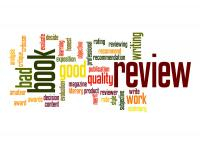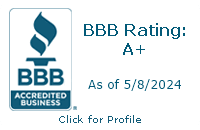When you find yourself short on time, how might the right books help you make the best use of that limited time?

Every June for the past 19 years, I've suggested several business books for summer reading. This year, between client work and preparing for an office move, I find myself extremely short on time.
Then it dawned on me – EVERYONE occasionally finds themselves extremely short on time for various reasons. Even when that happens, work still needs to get done – business development must continue, process improvement ideas for clients need to be surfaced, and open positions require interviews to fill. So, this year, I'm suggesting business books I turn to when I'm faced with one of those three challenges
Sales Techniques, by William T. "Bill" Brooks (2004)
A Six-Step Approach for Non-Manipulative Selling
I'm very fortunate to have come across this book when I did. About 15 years ago, the marketplace for technology consulting services changed significantly, requiring me to change how I approached business development. Bill Brooks, the author of this gem of a book, founded The Brooks Group (TBG), based here in Greensboro. I had heard good things about TBG, so I met with our then-relatively-new account rep, Jeb Brooks (Bill's son!), and ordered sales assessments for myself and several members of my staff.
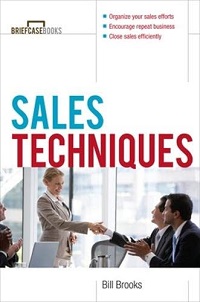 After we completed the assessments, Jeb went over the results with me including whether each person was more likely to be a "Farmer" or a "Hunter." Knowing that, I ordered several copies of this book and gave one to each of my “Farmers” and “Hunters” to become familiar with TBG's sales process, IMPACT.
After we completed the assessments, Jeb went over the results with me including whether each person was more likely to be a "Farmer" or a "Hunter." Knowing that, I ordered several copies of this book and gave one to each of my “Farmers” and “Hunters” to become familiar with TBG's sales process, IMPACT.
- Investigate – The book divides this first step into 3 sub-steps:
- Positioning – How the market perceives you and your company.
- Prospecting – How to find potential customers or clients.
- Pre-Call Planning – How to prepare for the Meet step.
- Meet – How to go about engaging with a prospect face-to-face.
- Probe – How to ask questions to surface needs, and also to assess whether your product or service can meet these needs.
- Apply – How to demonstrate the value your product or service can deliver to your prospect.
- Convince – How to back up your claims about your product or service.
- Tie-It-Up – How to ask for the business, and turn the prospect into a customer or client.
If a person excels in the first 3 steps – Investigate, Meet, and Probe – that person is likely a "Farmer," meaning they can take excellent care of a customer or client once the business has been secured.
If a person's strengths are in the last 3 steps – Apply, Convince, and Tie-It-Up – that person is likely a "Hunter," meaning their strength is in securing new business.
One final comment – this book is part of a series from McGraw-Hill called "BriefcaseBooks." All books in the series have the same format and intent as Sales Techniques – to provide you essential information on a topic as quickly as possible.
Bottom Line – Whether you need to find a specific idea or base your entire business development efforts on the IMPACT process, ensure this little book is on your bookshelf!
Lean Six Sigma, by Sheila Shaffie and Shahbaz Shahbazi (2012)
Demystifying Two Valuable Business Concepts
My business helps companies improve their business results by improving processes and deploying technologies to help people perform better. For nearly 34 years, I've seen a variety of process improvement methodologies come and go. I’ve also realized that process improvement projects are closely linked to quality improvement projects. Why is this? As I explain more fully in Todd's Hypothesis, Part One and Streamlining 101, this is because of a key insight I had:
Errors Gum Up Cost, Cycle Time, and Quality at the Same Time!
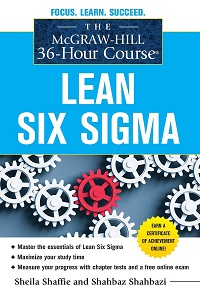 Two of the most recent quality improvement methodologies seem to have staying power – Lean and Six Sigma. This book concisely relates these two, then describes the book's premise:
Two of the most recent quality improvement methodologies seem to have staying power – Lean and Six Sigma. This book concisely relates these two, then describes the book's premise:
Six Sigma is about enhancing the quality and accuracy of processes by reducing variation, while Lean focuses on achieving faster response times by eliminating waste. As a result, these two methodologies offer complementary tool kits; they help address the root cause of different business challenges. (page 19)
The rest of the book presents a tool kit for the combined Lean Six Sigma approach described by the authors. These tools are organized by the 5 steps in the DMAIC problem-solving methodology (page 15):
- Define – Define the problem statement, the goal, and the financial benefits.
- Measure – Measure the current performance of the process and collect the required data.
- Analyze – Analyze the root cause of the problem.
- Improve – Improve the process to eliminate errors and instability.
- Control – Control the performance of the process, ensuring that the improvements are sustained.
The authors describe Lean Six Sigma as a journey, where delivering value with fewer errors replaces typical cost management, problems are solved by using data instead of gut feel, and processes – instead of people – are blamed for problems.
One final comment – this book is part of a series called “The McGraw-Hill 36-Hour Course.” While the Lean Six Sigma and other books in the series are similar in content and organization to the “BriefcaseBooks” series, the “36-Hour Course” series includes chapter tests and a free online exam yielding a certificate of achievement.
Bottom Line – This one book contains excellent examples illustrating the key concepts and tools used to improve process quality.
The EQ Interview: Finding Employees with High Emotional Intelligence, by Adele B. Lynn (2008)
Appendix 2 Is Worth the Cost of the Book!
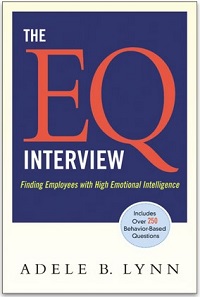 I believe this book’s title sells its content a little short. Yes, this book does explain how to conduct an interview using questions to effectively assess a candidate’s Emotional Intelligence (EI). (In case you’re wondering, Emotional Quotient, or EQ, refers to an assessment-based measure of Emotional Intelligence.) Yet, to do so, it also has to:
I believe this book’s title sells its content a little short. Yes, this book does explain how to conduct an interview using questions to effectively assess a candidate’s Emotional Intelligence (EI). (In case you’re wondering, Emotional Quotient, or EQ, refers to an assessment-based measure of Emotional Intelligence.) Yet, to do so, it also has to:
- Introduce EI concepts
- Map the five areas of EI – Self-Awareness, and Self-Control; Empathy; Mastery of Purpose and Vision; Social Expertness; and Personal Influence – to key job competencies
- Summarize each area of EI and explain the 3 to 5 job competencies in each area
- Describe some signs you might see in an interview indicating the candidate has EI challenges
In other words, the chapters in this book provide as complete and concise a summary of Emotional Intelligence as you'll find anywhere. For each area and job competency, example open-ended interview questions are given to assess how a candidate might meet – or not meet – each job competency.
And the best part? All those 250+ interview questions sprinkled throughout the chapters are collected and organized in Appendix 2, allowing you to quickly peruse and select questions to assess how well a candidate fits with the required competencies for a position.
Bottom Line – This book provides not only excellent interview questions to move beyond the canned and cliched "So, tell me about yourself ... " types of questions – it helps you understand EI concepts and determine what EI competencies are important for a person to succeed in a job.
Progress over Perfection: A Guide to Mindful Productivity, by Emma Norris (2020)
A Charming Book to Help Keep Focused on Gradual Improvement
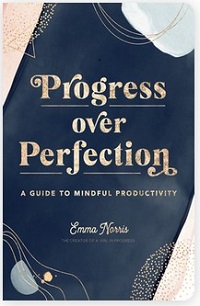 As with other persons setting high standards for themselves and others around them, I can get caught up in the pursuit of perfection. It took me many years to understand the difference between "Perfection" and "Excellence." The former cannot be consistently achieved, yet the latter can be.
As with other persons setting high standards for themselves and others around them, I can get caught up in the pursuit of perfection. It took me many years to understand the difference between "Perfection" and "Excellence." The former cannot be consistently achieved, yet the latter can be.
I also learned when to say something I'm working on is "Good Enough." Clients don't expect perfection – indeed, they wouldn't want to pay for the extra time to make something "Perfect." Instead, they want strong work that meets their time and cost parameters.
If it's okay for clients to take this mindset, then it's okay for me to do the same, and not get bent out of shape if, say, I missed placing an "Oxford comma" when one was needed. (Even so, a pet peeve I have with “The New York Times” is their style guide does not require use of an Oxford comma!)
A client likes to remind his staff of what he expects – Progress, Not Perfection. He knows that if people strive to constantly improve, they will reach and maintain excellent performance.
I recently came across this book in a gift store, liked the title and content, and bought it. The chapters include:
- Overcoming Perfectionism Paralysis
- Setting Goals That Stick
- One Thing at a Time
- Embracing the Chaos
- Setting Boundaries
- Learning to Rest, Not Quit
Bottom Line – I applied the principles in this book and the "Good Enough" paradigm to this newsletter in two ways:
- First, these book reviews are much shorter than I'd typically write, yet they're "Good Enough."
- Second, the books themselves help me achieve "Good Enough" performance in their content areas.
In Closing
Whenever I'm short on time, I want to reach for a book that can help me understand a topic well enough to apply it – the goal is to competently apply concepts to improve a situation, not to be an expert on that topic. Books like the first three, published by McGraw-Hill and AMACOM, fit that bill because they're geared toward practitioners and not academics. The final book helps me feel better about doing something "Good Enough" when I'm short on time.
And please, wish us luck on the office move!
Sincerely,

Todd L. Herman


